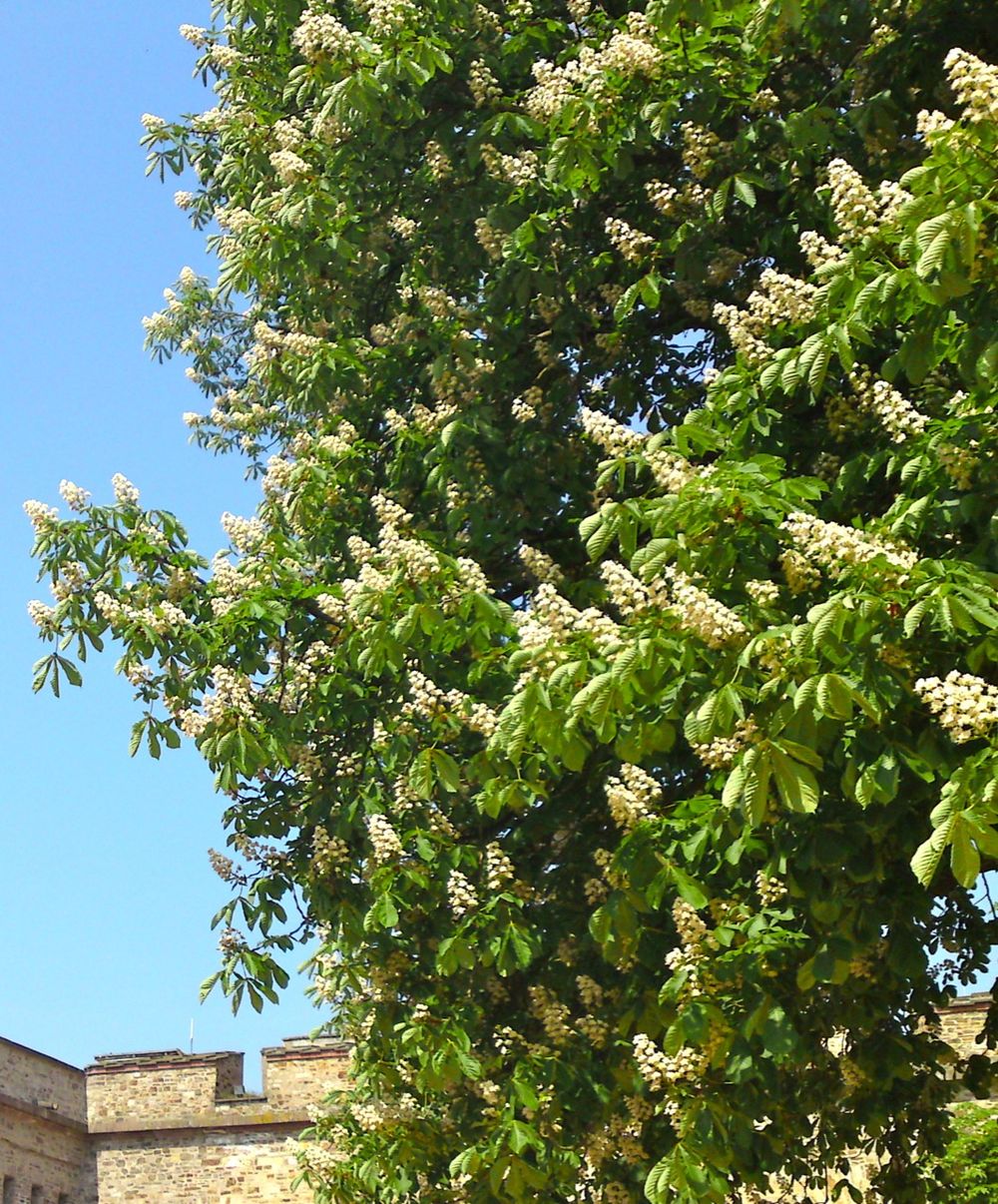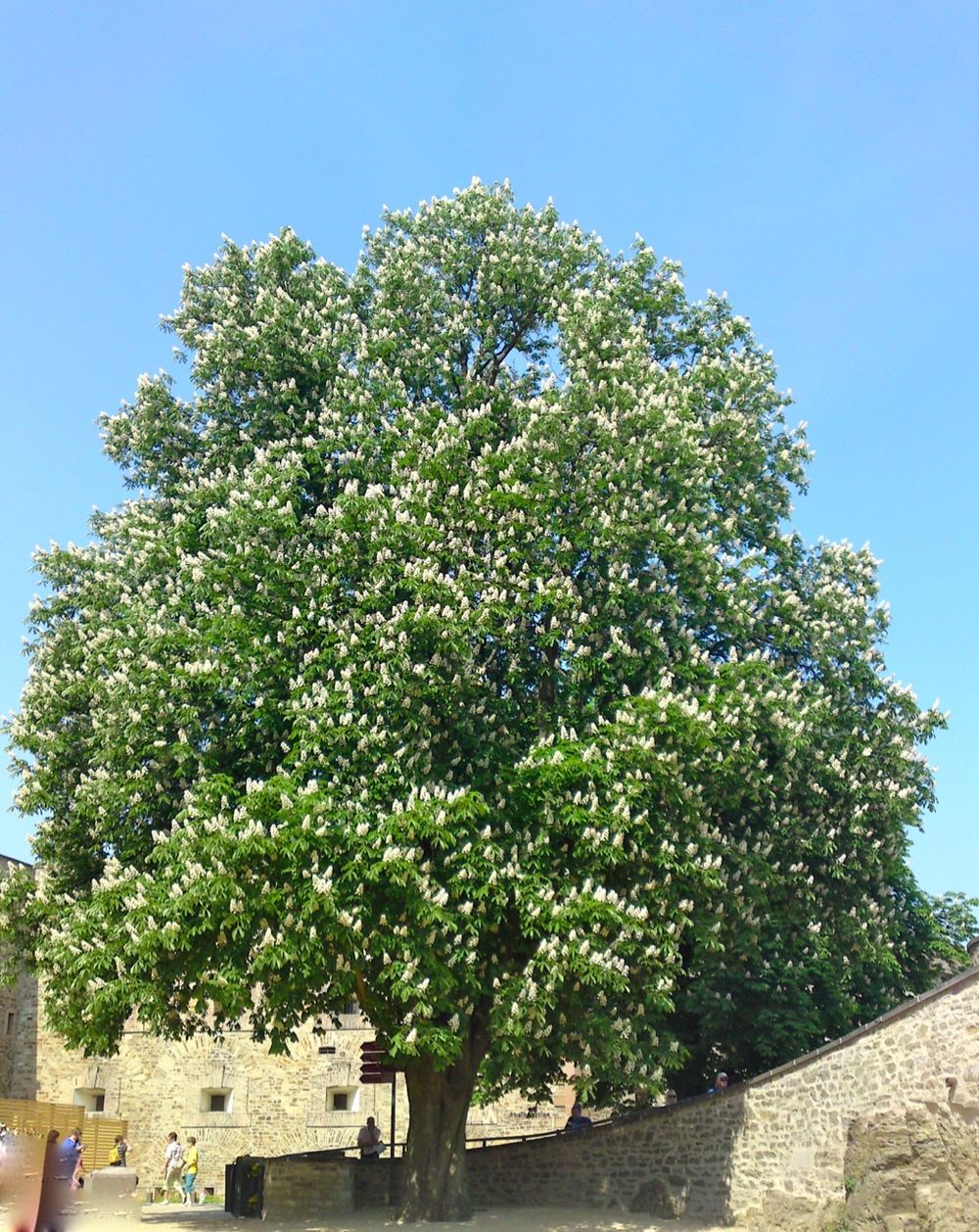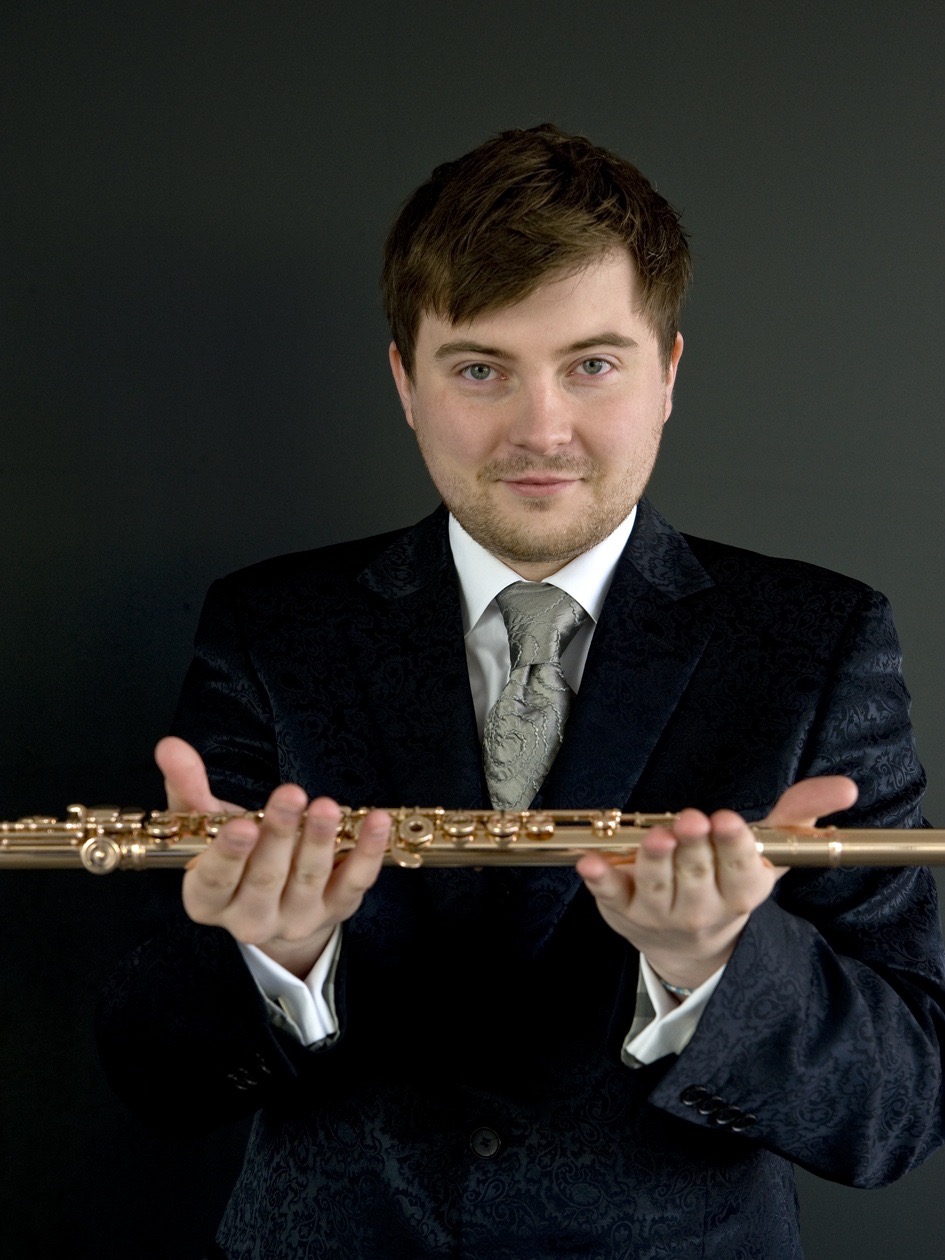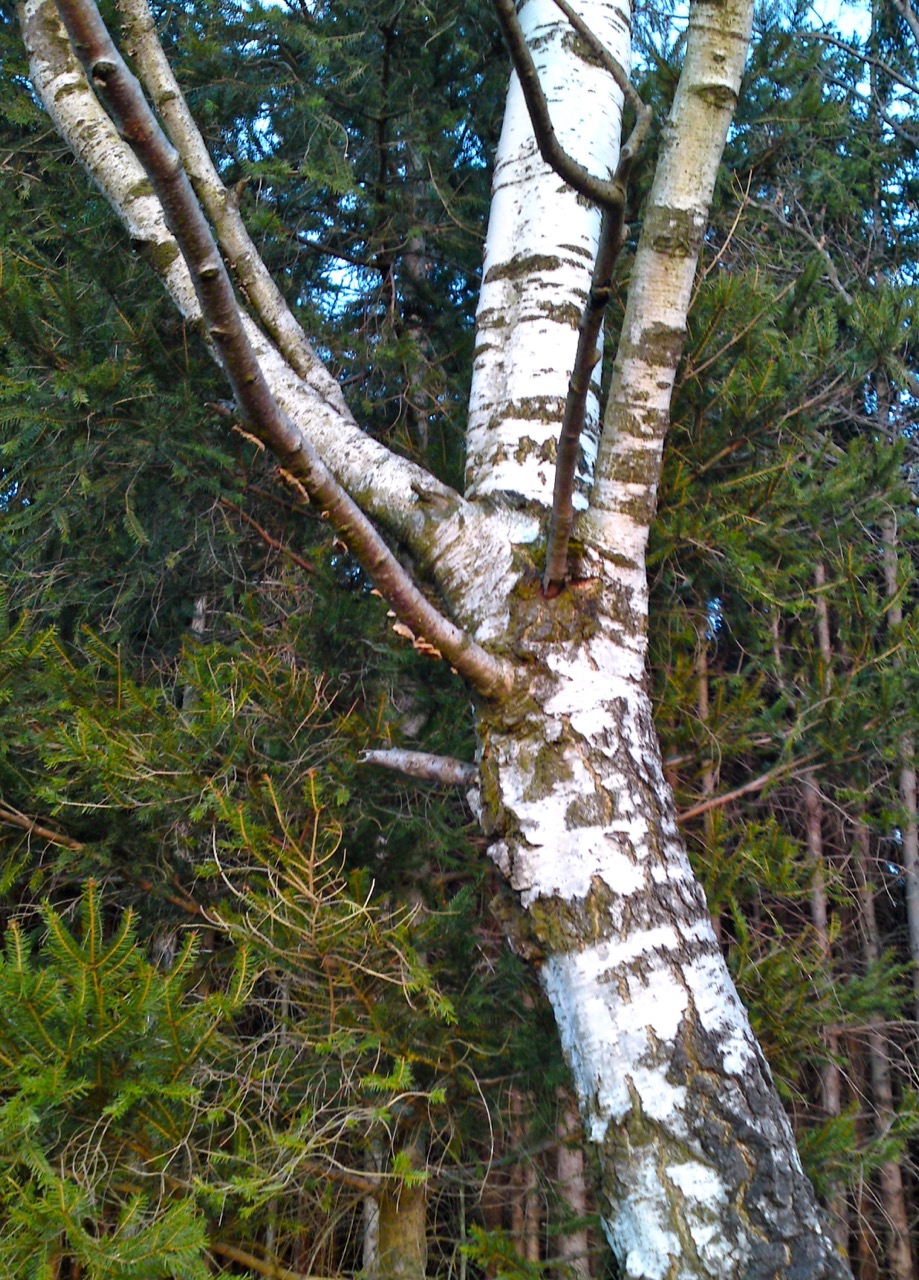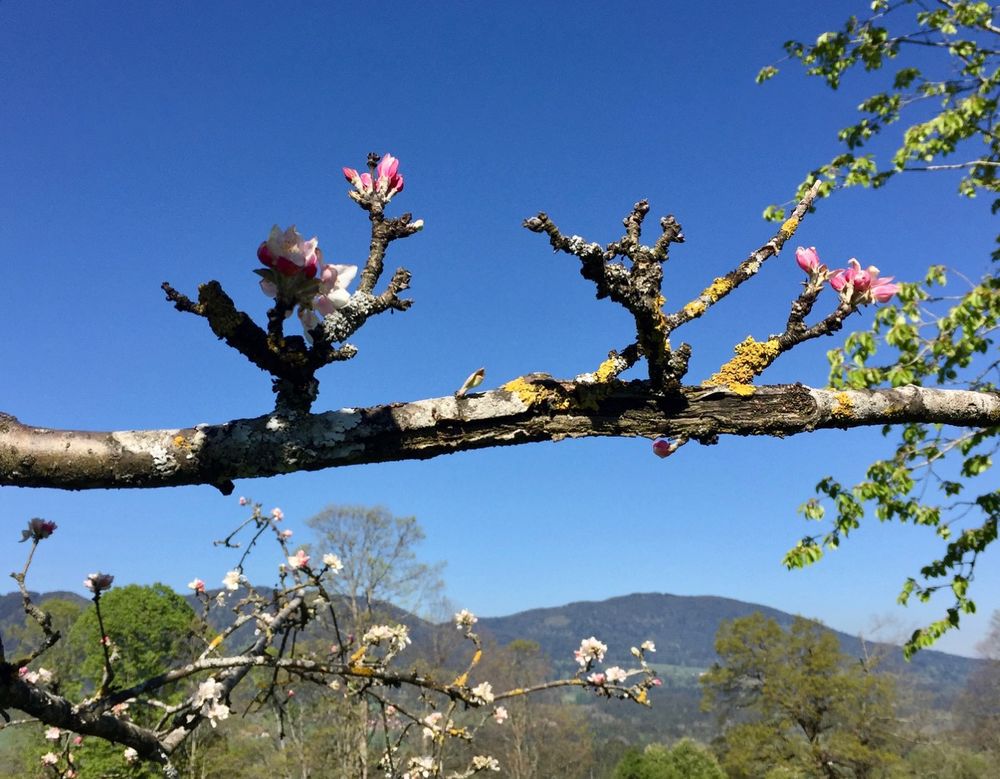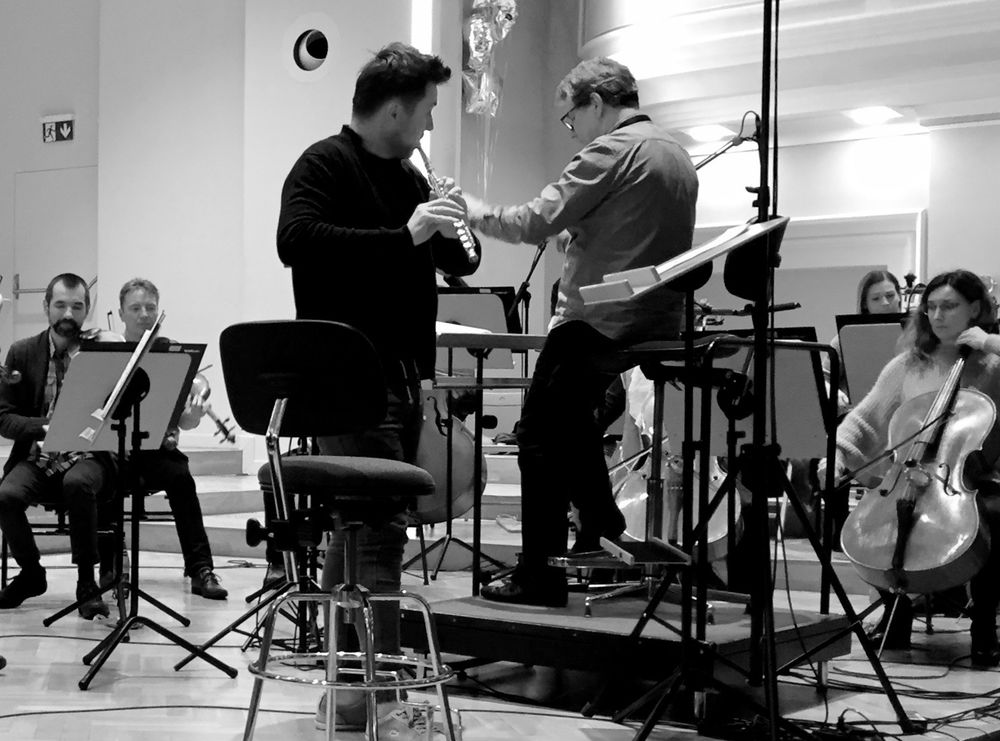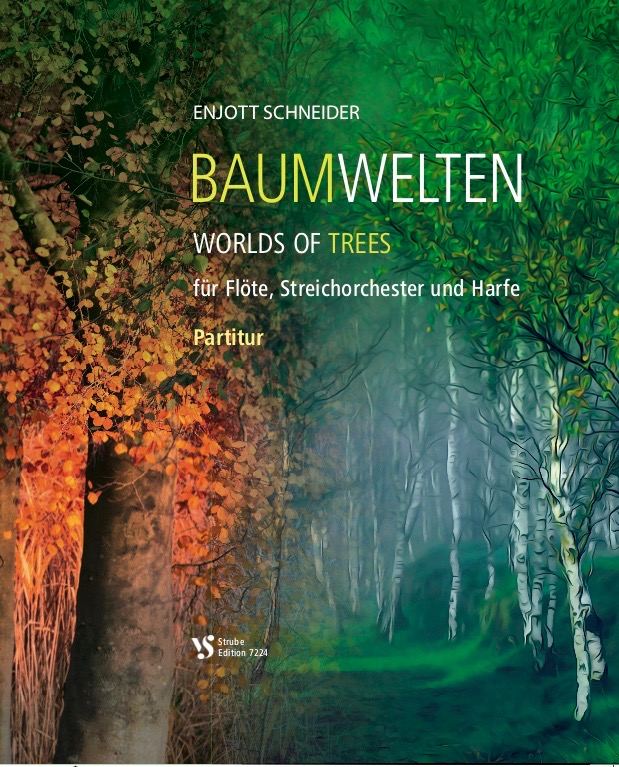
Category: Symphonic / Orchestral , Chamber Music , Recordings
Trees are personified forces of mother earth. For thousands of years they have been sung about, worshipped, immortalized in stories, myths and fairy tales. Each type of tree represents an individual psychological figure in the sense of an archetype.
It is also astonishing how interculturally similar forces and beings are assigned to trees in legends or in medicine. Not only today, but also in the ancient cultures of the Egyptians, Chinese, Mayans, Persians and Greeks.
Many poets and philosophers have expressed their fascination with the subject of "trees". A tree is the symbol of the earth's connection to cosmic and divine powers. German poet Hermann Hesse, for example, wrote "Trees are sanctuaries. Whoever knows how to talk to them, who knows how to listen to them, experiences the truth".
Movements: 1: BIRKE - BIRCH TREE
2: APFELBAUM - APPLE TREE
3: KASTANIE - CHESTNUT
4: HAINBUCHE – HORNBEAM
Duration: 20 Minuten (5:20 / 3:30 / 3:20 / 7:30)
Publisher of notes/sheet music: Strube-Verlag München , 2019
Instrumentation: Flute (Clarinet ad lib.)
Harp
String Orchestra
(Vl1, Vl2, Vla1, Vla2, Vc1, Vc2, Kb)
Solo instruments: Flöte, Harfe, Klarinette (B)
Introduction: Trees are personified forces of mother earth. For thousands of years they have been sung about, worshipped, immortalized in stories, myths and fairy tales.
Each type of tree represents an individual psychological figure in the sense of an archetype, which is reflected in the silhouette of the tree, in the leaf shape, in the bark structure, in the energy potential of the growth and in the shape of the fruit. These characteristics are closely related to the principles of human psychology.
Since 1987 I have been especially interested in the Celtic tree calendar and I am always surprised how big the analogies are between the human personalities I know and the tree personalities assigned to you on your birthday. In addition, I have got a feeling which vibrations a tree radiates, which personality type it embodies, how it stands in the world. It is also astonishing how interculturally similar forces and beings are assigned to trees in legends or in medicine. Not only today, but also in the ancient cultures of the Egyptians, Chinese, Mayans, Persians and Greeks.
Many poets and philosophers have expressed their fascination with the subject of "trees". A tree is the symbol of the earth's connection to cosmic and divine powers. German poet Hermann Hesse, for example, wrote "Trees are sanctuaries. Whoever knows how to talk to them, who knows how to listen to them, experiences the truth", or elsewhere: "Whoever has learned to listen to trees, desires to be nothing but what he is".
1). The "birch" is singularly assigned in the Celtic tree calendar to 21 June at the summer solstice. A girlish and spring-like tree. It stands for lively explosions, creative spring, is tender, beautiful, undemanding (thrives in arctic cold) but graceful, symbol of contented happiness. The almost imperishable birch bark heals and is the basic material for shoes and clothing, the birch sap gives life, youth and elasticity.
2). THE APPLE TREE, sensual, erotic, connecting good and evil, tree of knowledge and love (23.12. - 1.1. and 25.6. - 4.7.). Belongs to the rose family and is the oldest cultivated tree. With its vital substances and vitamins A, B1, B6, C and E, it is considered a gift of life and eternal youth.
3) THE CHESTNUT TREE - justice, honesty. It gives away flower and fruit - family faithful - shade protection - useful and nourishing, (15.-24.5. and 12.-21.11.) At first prickly, it wins only through closer acquaintance and then shows the not everyday splendour and beauty. Has undreamt-of energies that can direct her towards community. The born diplomat, but also very sensitive and then withdraws quietly. He often feels misunderstood and suffers. This, however, in concealment, because the chestnut is always superior to the outside.
4). The "hornbeam" (Carpinus Betulus) has been assigned by the Celts to June 4 to 13 and December 2 to 11. Often referred to as "ironwood", the hornbeam provides the hardest European timber from which combs and mill wheels were often made. Psychologically it stands for confidence, discipline, robustness and is considered invulnerable due to its preserving nature. With its elder and hazel bush it belongs to the secret woods of the wise women who represented folk medicine in pre-Christian times.
Dedication: Dedicated to Lukasz Dlugosz in friendship
World premiere: 04.06.2019, 11th of january 2020 Philharmonie Katovice
Performers at world premiere: Lukasz Dlugosz (Flute) and Silesian State Phiilharmony Orchestra in Katovice, Conductor: Mirosław Jacek Błaszczyk



